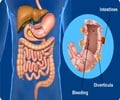Ampicillin and Sulbactam Medication Information
Learn everything you need to know about Ampicillin and Sulbactam-pronunciation, uses, dosage guidelines, indications, and when to take or avoid it.
Get up-to-date information on side effects, precautions, warnings, and proper storage to ensure safe usage.
Explore Ampicillin and Sulbactam brand names commonly used in India and internationally, along with detailed pricing information. Consult your healthcare provider for tailored medical advice.
Generic Name : Ampicillin and Sulbactam Pronunciation : am- pi- sill' in- sul- bak' tam ICD Code : Y40.0 Therapeutic Classification : AntibioticsBrand Names or Trade Names of Ampicillin and Sulbactam
India :
International :
Unasyn, Subacillin, Sultamicillin
Why is Ampicillin and Sulbactam Prescribed? (Indications)
This medication is a penicillin antibiotic, prescribed for susceptible bacterial infections like skin infections, gynecological infections or infections of the abdomen either alone or with other medications. It blocks the bacteria's cell wall growth, which kills the bacteria. Sulbactam blocks the enzyme, which breaks down ampicillin and thereby allows ampicillin to attack and kill the bacteria.When should Ampicillin and Sulbactam not be taken? (Contraindications)
Allergic to penicillins, infectious mononucleosis (kissing disease).What is the dosage of Ampicillin and Sulbactam?
Dose is based on ampicillin dose. IV Endocarditis 2g 6 hourly for 4-6 week with gentamicin or vancomycin. Aspiration, community-acquired pneumonia 1-2g 6 hourly. Hospital-acquired pneumonia 2g 6 hourly. IV/IM Susceptible infections 1-2g 6 hrly. Max: 8 g/day. Uncomplicated gonorrhoea 1-2g as single dose, may use with oral probenecid. Acute pelvic inflammatory disease 2g 6 hourly with IV or oral doxycycline. Discontinue parenteral treatment 24 hr after clinical improvement; continue oral doxycycline to complete 14 days of treatment. The total dose of sulbactam should not exceed 4gms per day.Pediatric Patients 1 year of age or older recommended dosage is 300 mg per kg of body weight administered via IV infusion in equally divided doses every 6 hours.
How should Ampicillin and Sulbactam be taken?
It comes as a solution for injection, to be administered by a healthcare provider into the large muscle or the vein. It also comes as a tablet for oral use.What are the warnings and precautions for Ampicillin and Sulbactam?
•Monitor for signs of anaphylaxis, blood count, kidney and liver function, signs of super infections with mycotic or bacterial pathogens during treatment.Prolonged use may increase the risk of fungal infection.
Caution needed during pregnancy and lactation.
• It should not be mixed with aminoglycosides while administering into the vein.
What are the side effects of Ampicillin and Sulbactam?
Local- Pain at injection site.Central Nervous System- Fatigue and malaise.
Gastrointestinal- Upset stomach, abdominal distention, sore throat/mouth, vomiting, gas, nausea, and diarrhea.
Allergic reactions- Itching, swelling of the face/hands/feet, difficulty in breathing, mucosal bleeding, dizziness, chest pain, skin rash, unusual bleeding or bruising, sore throat, difficult or painful urination and swollen tongue.
What are the other precautions for Ampicillin and Sulbactam?
Keep this product, as well as syringes and needles, out of the reach of children and pets.Do not "double-up" the dose when a dose is missed.
What are the storage conditions for Ampicillin and Sulbactam?
Store dry powder at 20-25�C. Store it at room temperature. Refrigerate suspension. Do not freeze. Discard after 14 days because the medicine loses its potency.Place the medication in room temperature for 1 hour prior to use.










